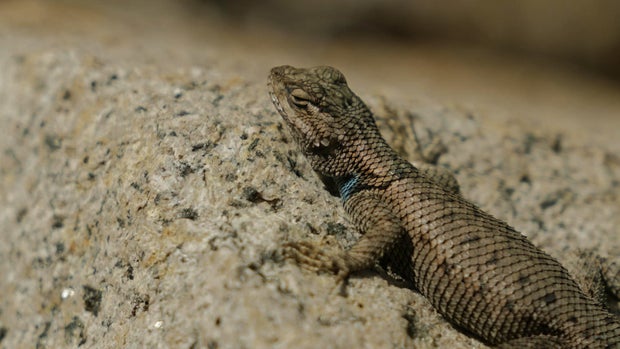As a wave of pro-Palestinian activism on college campuses showed few signs of abating on Tuesday, the demonstrations have raised new questions about what shape the end of the semester may take for thousands of students across the United States.
At Columbia University, where the arrests of more than 100 protesters unleashed a flurry of national protests, students will have the option to attend their last week of lectures remotely for safety reasons. At the University of Texas at Austin, protesters announced plans to occupy a campus plaza and said that, at least for them, “class is canceled.”
And at the University of Michigan, administrators were already looking ahead and bracing for graduation. They set up designated areas for demonstrations, and agreed to “generally be patient with lawful disruptions.”
“Commencement ceremonies have been the site of free expression and peaceful protest for decades,” the university said in an online message, adding, “And they will likely continue to be.”
The steps are an acknowledgment that the last weeks of the spring could be among the most difficult for administrators at some of the nation’s most prestigious universities. On Tuesday, the campus police at the University of Minnesota took nine people into custody after they erected a protest encampment, following dozens of arrests at Yale and New York University.
Other demonstrations continue to emerge from coast to coast, including at the University of New Mexico and Emerson College. At California State Polytechnic University, Humboldt, students took over a campus building, and barricaded the exits with chairs and trash bins.
The pro-Palestinian student movement has disrupted campus life, especially for Jewish students. Many have said they no longer feel safe in their classrooms or on university quads as the tone of protests at times has become threatening.
At the same time, many school leaders may face the possibility of graduation ceremonies transforming into high-profile stages of protest over the war in Gaza.
No matter how administrators approach these final weeks, the stakes are uniquely high for students who are graduating. Many graduated from high school in the first months of the coronavirus pandemic, and never walked across the stage or celebrated alongside their classmates.
The tumult on campuses escalated after Columbia’s administration called in the police last week to arrest student protesters who had organized a large encampment on a school lawn and refused to leave.
At the New School in Manhattan, where protesters have set up tents inside a school lobby, a couple dozen students formed a picket line on Tuesday as they chanted to the beat of a drum. When one student was asked how long protesters intended to continue the demonstrations, she said there was no immediate end in sight.
“We’re demanding something,” said the student, Skylar Schiltz-Rouse, a freshman who joined the protest on Monday. “So if it doesn’t happen, we’re going to have to keep going.”
It was not yet apparent whether the turmoil at schools would prompt additional arrests, or whether college leaders would adopt a less aggressive playbook as the semester winds down.
Many administrators, watching the uproar at Columbia, seem to be choosing other strategies to handle the protests. Several universities, including Harvard and schools in the California State University system, have shut down parts of their campuses in an effort to avoid major clashes and conclude the school year quietly.
“What you’re seeing is an inability to find spaces for dialogue and conversation and understanding,” said Benjie Kaplan, the executive director of Minnesota Hillel, a Jewish student group.
After school leaders often inflamed unrest with their initial responses, some have begun to hit the brakes.
At Barnard College, Columbia’s affiliate school, many student protesters had received interim suspensions for last week’s tent demonstration. But in a Monday night email, the school’s president, Laura Ann Rosenbury, extended an olive branch.
The school would lift most of the suspensions and restore students’ access to campus, she said, as long as they promised to follow the rules. Those who still face discipline would have access to hot meals, mental health counseling and academic support. And with a professor’s permission, they could also finish out the semester virtually.
“I strongly believe that exposure to uncomfortable ideas is a vital component of education, and I applaud the boldness of all of our students who speak out,” Ms. Rosenbury said in the email, her first message since the arrests of protesters on Columbia’s campus last week, several of whom were Barnard students.
“But,” she said, “no student should fear for their safety while at Barnard.”
She added: “In these last few weeks together before our seniors graduate, let’s be good to one another.”
Some pro-Palestinian students, though, may regard commencement as an opportunity.
Protesters at many schools have vowed to press on until their universities divest from companies with ties to Israel, often chanting “We will not stop. We will not rest.” Administrators are on high alert for demonstrations or threats, as tens of thousands of families travel to campuses in May and June to attend graduations.
Dagmar Michelson, a senior at the New School, was unsure if protests were planned for the university’s May 17 ceremonies. But if they are, she added, she would not be upset.
“It’ll be nice for those who haven’t recognized their privilege,” she said.
Earlier this month, the University of Southern California cited security concerns when it canceled a speech by its valedictoriana first-generation Muslim student who questioned the university’s explanation. The school later said it would also not host outside honorees.
Already, students have organized demonstrations meant to disrupt cherished college traditions.
At Michigan, several dozen protesters took over a celebration for honors students last month, waving signs that read “Divest Now” and interrupting a speech by the university’s president, Santa J. Ono, according to The Michigan Daily.
“Protest is valued and protected,” Dr. Ono said in a statement after the event. “Disruptions are not.”
Shira Goodman, the senior director of advocacy at the Anti-Defamation League, said the disturbance at Michigan “may unfortunately be a harbinger for what’s to come.”
The group is concerned about the potential of harassment or “identity-based hostility” toward Jewish families at graduation ceremonies. “We remain deeply concerned,” Ms. Goodman said in a statement.
Some colleges are now stepping in to promise Jewish students a safe haven. Brandeis, a historically Jewish university in Massachusetts, said this week that it would extend its deadline for transfer applications in response to campus protests.
The president, Ronald D. Liebowitz, said the school would provide an environment “free of harassment and Jew-hatred.”
Other schools have had little time to look ahead to the future as they reel from the last few days.
At N.Y.U., where at least 120 people were arrested on Monday night after refusing to vacate a plaza, several students said on Tuesday that they would continue to voice support for Palestinians, and were unconcerned that their protest activities might upend final essays and assignments.
The university had said it turned to the police because “disorderly, disruptive and antagonizing behavior” of protesters created safety concerns. But on Tuesday, a professional faculty organization shot back.
The school’s chapter of the American Association of University Professors called “much of their account” false, referring to the administration, and criticized the decision to call the police as an “egregious overstep.”
And at Columbia, the university’s president, Nemat Shafik, is facing the threat of a formal censure resolution from the school’s faculty for her handling of demonstrations. Many Republican lawmakers are also still calling for her resignation, arguing that the school has failed to safeguard its Jewish students.
The decision to offer hybrid classes at Columbia seemed to be a tacit acknowledgment that many students were, at the very least, uncomfortable there. Many are expected to log on from their dorms and apartments. Others might attend from a large protest encampment that remained in the center of campus.
Along with the demonstration, occasional outbursts at rallies have occurred outside the campus’s gates over the past several days. But otherwise, Columbia has been quiet during what is typically a bustling final week of the semester.
Angela V. Olinto, the university provost, said in an email on Monday night that if even one student wanted to finish out the year online, professors should offer hybrid classes — or move to fully remote if that was not an option.
“Safety is our highest priority,” Dr. Olinto said.
Maia Coleman, Eliza Fawcett, Colbi Edmonds, Jose Quezada, Ernesto Londono, Kaja Andric, Coral Murphy Marcos, Dana Goldstein, Karla Marie Sanford and Stephanie Saul contributed reporting.
















